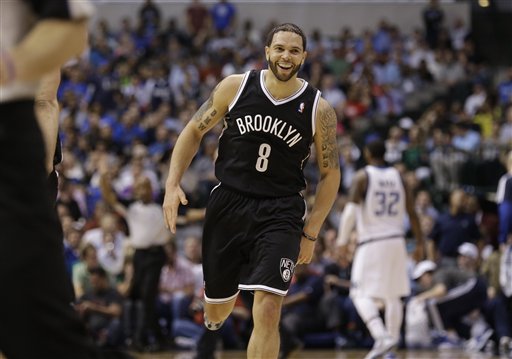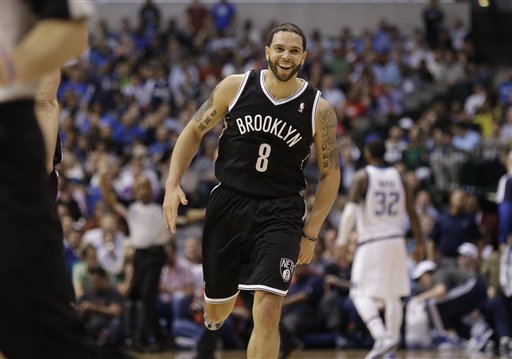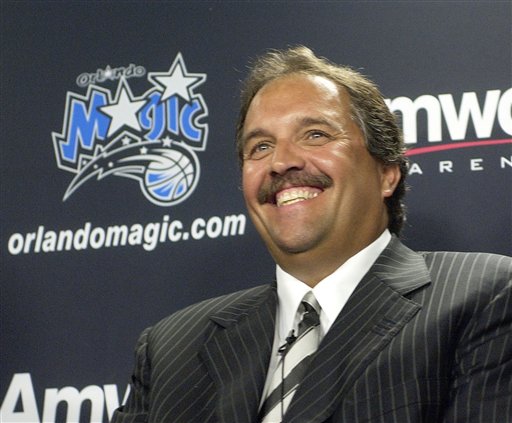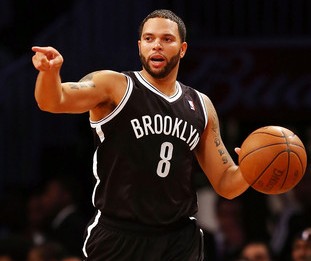
Season Numbers: 18.9 PPG, 7.7 APG, 3.0 RPG, 1.0 SPG, 44.0 FG%, 37.8 3P%, 85.9 FT%, 20.3 PER, 10.9 WS
As Max noted earlier in his case for Brook Lopez as team MVP, the definition of just what an MVP award is is a discussion rampant with side-stepping opinions. People often talk past each other, relying on their own rigid definition of the meaning of the word “value.” Do you value peak? Consistency? Longevity? Memorability? All of them? How do you weigh them?
I, personally, have always valued a sustained peak. I’d take Pedro Martinez’s seven-year stretch from 1997-2003 over almost any stretch any pitcher has ever pitched, and I think his 58 starts from 1999-2000 rank as the best a pitcher has ever been. If a player’s great, I value that player’s greatness over perhaps a longer “good, but less memorable” streak.
I’ve extolled Brook Lopez’s virtues non-stop on this site; I’ve argued that he deserves a first-team All-NBA ranking at center, that he’s been enormously undervalued and put together the best season of his career. But as far as a sustained peak goes, nobody topped Deron Williams.
To say Deron Williams has had an up-and-down season is a misnomer: if anything, he’s had a down-and-up season. Williams struggled with crippling pain in both ankles in the first half of the season, and his shooting reflected it: prior to the All-Star break, Williams shot just 41.3% from the field on 13.5 attempts per game, with just 2.6 attempts per game coming in the restricted area. But after Williams underwent treatment entering the All-Star break, receiving platelet-rich plasma therapy, a detoxifying juice cleanse, and three cortisone shots to his ankles, Williams’s game transformed.
His shooting efficiency shot up. His quickness off the dribble and his ability to attack and probe the lane returned. He increased his points per game in every single month of the season. His attempts at the rim nearly doubled — from 2.6 attempts per game before the All-Star break to 5.1 attempts per game after — and he averaged one more made three-pointer per game. His post-All Star break PER of 25.2 would rank fourth in the NBA, according to ESPN’s Tom Haberstroh. He produced 110.4 points per 100 possessions in NBA.com’s estimation, which would rank as the best on the team by a substantial margin. He increased his shooting load both in the paint and beyond the arc while drawing more fouls and improving on his scoring. The treatment didn’t turn him into a better player, but into the player he always was.
Defensively, there’s not much to talk about with Williams. Like most Nets players, Williams struggles to remain engaged on the defensive end for all 48 minutes, and though he’s shown an ability to play bigger guards in stretches, there’s not much that separates him from the rest of the roster or the average point guard.
But Williams is the team’s offensive catalyst, the player that most often gets teammates open looks. Brook Lopez has credited Williams’s with his breakout season; according to Synergy Sports Technology, Lopez ranks first in the NBA in pure points off plays labeled as “cuts” — often dump-downs to an open big near the rim — and many of those come from the constructed chemistry between the two: Lopez has become more adept at finding and creating open space near the rim, and Williams knows when to hit him. Over 41% of Lopez’s 522 field goals while sharing the court with Williams have come directly from a Williams assist, and with Williams on the floor, Lopez shoots substantially better from the field (52.9% with him on, 44.9% with him off).
I’m tempted to give Williams the “game ball” simply for being this team’s catalyst, but that’s what Avery Johnson did in his first game in Brooklyn, and he was fired two months later. So I won’t go there. What I will say is that even with Williams’s shooting struggles in the first half of the season, it was his non-shooting offensive skills that helped develop Brook Lopez into the player he is, and once he was healthy, it was his all-around offensive skills that carried them in the second.

















